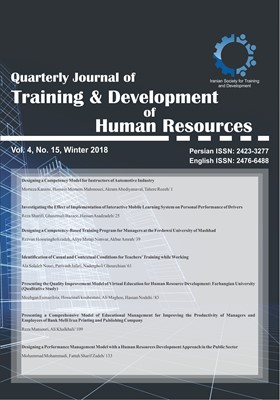-
-
List of Articles
-
Open Access Article
1 - Designing a Competency Model for Instructors of Automotive Industry
morteza karami hossein momeni mahmouei akram abedian avval tahereh rozeh -
Open Access Article
2 - Investigating the Effect of Implementation of Interactive Mobile Learning System on Personal Performance of Drivers
Ghasemali Bazaee Hasan Asadzadeh -
Open Access Article
3 - Designing a Competency-Based Training Program for Managers at the Ferdowsi University of Mashhad
Razvan Hosseingholizadeh Aliye Matagi akbar amrahi -
Open Access Article
4 - Identification of Casual and Contextual Conditions for Teachers’ Training while Working
Ala Solaleh Nouri Parivash Jafari Nadergholi GHourchian -
Open Access Article
5 - Presenting the Quality Improvement Model of Virtual Education for Human Resource Development: Farhangian University (Qualitative Study)
mozhgan esmaeilnia Hosseinali Kouhestani Ali Maghool Hassan nodehi -
Open Access Article
6 - Presenting a Comprehensive Model of Educational Management for Improving the Productivity of Managers and Employees of Bank Melli Iran Printing and Publishing Company
Reza Mansouri Ali Khalkhali -
Open Access Article
7 - Designing a Performance Management Model with a Human Resources Development Approach in the Public Sector
Mohammad mohammadi
-
The rights to this website are owned by the Raimag Press Management System.
Copyright © 2017-2026







